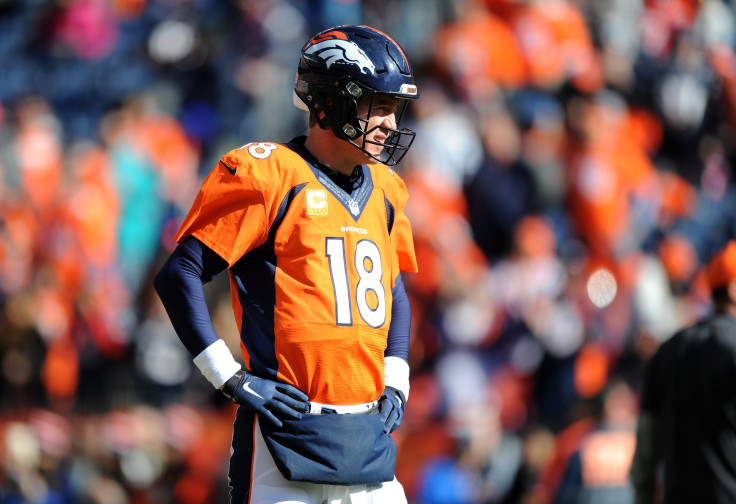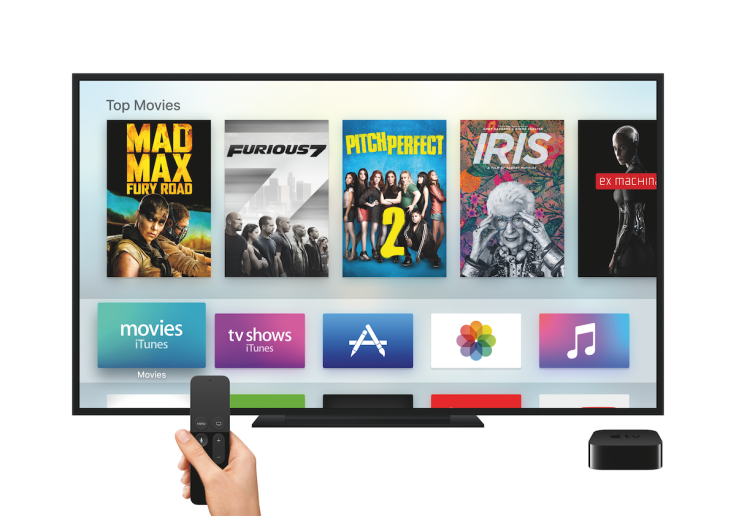Patriots vs. Broncos, Cardinals vs. Panthers? Doesn’t Matter Who’s Playing: The NFL Is The Biggest Thing On TV

The NFL is television’s 800-pound gorilla. If there were any doubt about that, let it be laid to rest here and now.
Among the 15 biggest telecasts on TV this fall, 14 were NFL games. (The lone exception? CNN’s Republican presidential debate Sept. 16.) Despite horrifying off-field incidents involving players, people still tune in to Sunday, Monday and Thursday games in droves: Sundays this season, Fox’s late-afternoon NFC games drew an average of 26.8 million viewers, and CBS’ late-afternoon AFC games drew an average of 25.9 million of them. “NBC Sunday Night Football” brought in 22.5 million, and even CBS’ “NFL Thursday Night Football” weighed in with 17.6 million.
And that’s just eyeballs.
The Super Bowl alone has brought in $2.38 billion in advertising dollars during the past decade, according to research firm Kantar Media. The price of the average spot in the biggest televised spectacle in the U.S. has increased by 76 percent over the same period.
CBS wouldn’t comment on its expected windfall for the big game next month, but Kantar expects a haul of about $400 million, because of the increased average price per spot, at $5 million, and a slight uptick in number of slots made available.
For media buyers, football is a no-brainer. As appears to be the case with viewers, no amount of scandal seems capable of driving them away from purchasing ad time in games. If one client does develop a conscience, two others will take its place, say media-buying sources. Spots in Fox’s Sunday-afternoon NFC games are priced around $689,225, according to estimates from Advertising Age. If you’re bargain hunting, ESPN’s “NFL Monday Night Football” games are a little more reasonable, at $427,685, as they draw 52 percent fewer viewers.
That doesn’t mean the league’s broadcast partners glory in bad behavior off the field or in the equally disturbing body of evidence that points to severe brain damage in ex-players. “A lot of it is unfortunate, a lot of it you don’t want to see,” CBS Sports Chairman Sean McManus says. “I’m not saying we want more of those stories.”
However, McManus says, “It hasn’t affected the ratings.”
So how did the NFL grow into TV’s 800-pound gorilla? The first Super Bowl in 1967, played between the Green Bay Packers and Kansas City Chiefs, aired on NBC and CBS and averaged 51.1 million viewers, with 41.1 percent of households tuning in. More than 114 million people — 47.5 percent of households — watched last year’s brutal defeat of the Seattle Seahawks by the New England Patriots after Seahawks coach Pete Carroll momentarily lost his mind in a second-and-goal situation.
“No one wants to be the one on Monday morning, when asked, ‘Did you see that incredible play last night?’ to say, ‘No, I didn’t see that.’” McManus says. “There are only 16 regular-season games, so it’s really destination, appointment viewing starting in September.” Add in the superhuman feats of players such as Odell Beckham Jr. and J.J. Watt, he says, and you’ve got a recipe for massive audiences.
That’s one explanation, and it does likely account for some of the audience growth. But if you look at the parallel rise of fantasy sports, particularly daily fantasy contests run by sites such as DraftKings and FanDuel, as well as gambling on professional football, another narrative emerges.
In 2004, $81 million were bet on the Super Bowl in Nevada, according to the Nevada Gaming Commission; the audience for Super Bowl XXXVIII was 89.8 million. Last year, just shy of $116 million passed through bookies’ hands; 114.4 million people watched the game. And that’s just legal bets placed in Nevada: Estimates of illegal Super Bowl wagers range from $8 billion to $12 billion.
On a regular October Sunday this season, DraftKings and FanDuel took in $45.6 million combined, according to the Scottish daily-fantasy analytics site SuperLobby. And Yahoo Sports reportedly has almost 57 million players in its fantasy sports leagues.
With millions of dollars on the line, millions of eyeballs are bound to follow. The No. 1 market for ESPN’s “NFL Monday Night Football” this year? Las Vegas, with an average of 14 percent of households tuned in every Monday.
Nobody ever went broke betting on Americans’ propensity to gamble, or their love of televised violence, so while using a single sport as the cornerstone of a business model may appear to be a bad idea, and an untenable one at that, the ad revenue and promotional power generated by NFL games really does make the staggering price tag — at about $1 billion a year for CBS, Fox and NBC — worth it.
In 1993, CBS let its rights to NFC games slip away. “That was before my time,” says McManus, who arrived at the network in 1996. “But they realized the mistake as soon as they made it.”
Two years ago, the league decided it wanted to colonize another night, doling out the rights to eight of its Thursday games to CBS for a season. (The other eight aired on the NFL Network.) It renewed the deal for another year in 2015, but is currently in the throes of decision-making over what the Thursday-night football package will look like for the 2016 season.
McManus demurs when asked about the likelihood of another fall of “NFL Thursday Night Football” on CBS. “I wouldn’t call us the front-runner,” he says. “The front-runner usually has the most money, and I’m not sure what the other networks are planning financially.”
Other sources say the odds of CBS at least getting a piece of the package once more are fairly high. The NFL is thinking of splitting up the games among more than one network (the games would rotate week to week). The networks will theoretically bend, although, McManus says, “CBS is so successful in primetime, you could make the argument that we need ‘Thursday Night Football’ less than the other broadcast networks. Having said that, we’re used to having it.”
In 2005, ABC decided to get out of the “NFL Monday Night Football” business. Sibling network ESPN (both are owned by Walt Disney Co.) shelled out $1.1 billion per year for the “MNF” package instead, and the rights to “Sunday Night Football,” which had been airing on ESPN, went to NBC for $600 million per year.
“It’s very difficult to have a network without the most dominant programming from September through the first week of February,” McManus says.
ABC shifted its entire programming strategy to make up for the lack of a massive male audience to target with promotions, paving the way for female-skewing shows such as “Brothers & Sisters,” “Castle,” “Revenge” and the entire lineup of Shonda Rhimes shows.
“Unless something happens with the corporate or ownership structure of one of the networks, it’s unlikely that one of us will give it up in the future,” McManus says.
The rights for the Sunday games are locked in until 2022. What happens after then is hard to predict, but given that prices for those rights just about doubled in the last go-round, it won’t be pretty. “I’ve never seen an NFL contract that’s gone down in value,” McManus says.

Further complicating matters are the technology companies that are already sniffing around. Apple Inc. and the Google unit of Alphabet Inc. are currently bidding over a streaming package for the three NFL games to be played in London during the 2016-17 season.
Google’s YouTube would make an attractive streaming destination. Meanwhile, Apple has one of the most recognizable brands in the world, and if Google has a mountain of money ($66 billion in revenue in 2014), Apple has a Mount Everest of money ($234 billion in revenue in 2014). Even shelling out $25 million per game wouldn’t dent its bottom line.
(Poor, embattled Yahoo Inc., the online host of a reasonably successful live stream of a Jacksonville Jaguars-Buffalo Bills contest in London this fall, isn’t even in the conversation.)
The promotional value of these games for these two companies could be enormous. Apple appears hell-bent on making sure everybody in the country buys an Apple TV anyway, so partnering with the NFL is a good signal boost, at the very least. For Google, industry observers say, the obvious play would be to make the games available through its YouTube Red subscription video service.
Super Bowl 50 will air Feb. 7, on CBS, appropriately enough. Barring some disaster, it’ll snag at least 110 million viewers, reiterating just how important the NFL is to TV. Let the games begin.
© Copyright IBTimes 2024. All rights reserved.






















